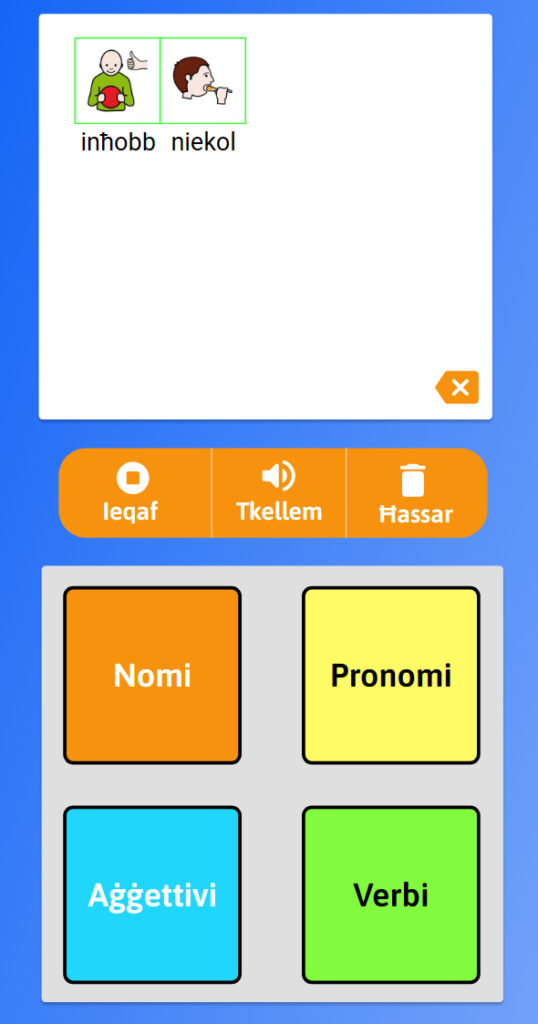The use of augmentative and alternative communication (AAC) devices is crucial to guaranteeing the independence of millions of children and adults globally, who rely on such devices to communicate. Despite being a necessity for such individuals, the price of entry is often a limiting factor to many. Moreover, in the case of Maltese-speaking individuals, no specialised apps had existed before the creation of MaltAAC v1.0, and its subsequent upgrade, MaltAAC v2.0.
One of the main aims of this final-year project was to improve upon the experience of the existing app, by creating MaltAAC v3.0 to provide an experience akin to some of the most popular apps available whilst also retaining accessibility for all individuals. In order to achieve this, MaltAAC v3.0 was designed by using modern Android Material Design principles, as well as WCAG (Web Content Accessibility Guidelines) 2.1.
The use of Android Material Design facilitates the creation of a clean, easy-to-navigate experience using fluid transitions and animations, vibrant styling and colour schemes. WCAG 2.1 help provide the groundwork for creating accessible content to a wider array of users, using high-contrast colours, typefaces catered for individuals with dyslexia, specific layouts (where the main content would be clearly indicated), audio playback, and text input, catering for individuals with different impairments. The combined compliance with the above-mentioned guidelines is exhibited throughout the app, striking a balance between modern and accessible.
The other main objective of this development was to improve the communicative aspect of the app, promoting more natural and flowing conversations when using the app. This was achieved by using the Modified Fitzgerald Key, which uses colour-coded designs to create relationships between different attributes (e.g., verbs being coded in green). Combining this with an updated prediction model, as well as a separate page containing the user’s favourite phrases, would serve the dual function of teaching communication through correct sentence structure, as well as promoting communication speed.
In order to evaluate the success of the app, the project included an online focus group consisting of speech and occupational therapists, who were requested to compare the proposed version of the application with the previous version. In addition, informal feedback obtained from various potential users indicated that the proposed version of the app showed a marked improvement in design, communication speed, and user-friendliness over the previous version.

Figure 1. The main screen of the app using a 2×2 button grid
Student: Adam Ruggier
Supervisor: Prof. Ing. Owen Casha
